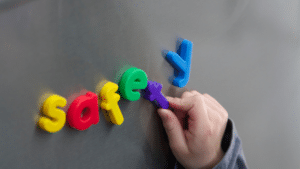
As a result, Prevent Blindness America has declared December as Safe Toys and Gifts Month. But what does it mean, and what can you do to protect your children from dangerous toys?
Why Is December Safe Toys and Gifts Month?
As previously mentioned, eye injuries related to toys are extremely common, especially during holidays. More specifically, there were almost 230,000 toy-related injuries in the US in 2018, and half of them were suffered by children under the age of 15.
Therefore, many organizations, including Prevent Blindness America, are raising awareness about the dangers of toys. Their goal is to make parents understand that toys have an age range that shouldn’t be ignored, no matter what. And since December is the month with the most gifted toys, it has been selected as the Safe Toys and Gifts Month.
Toy Guidelines
The following guidelines should help you pick safe toys for your children and prevent accidents:
- Avoid toys that have cords, ropes, or heating elements.
- Only choose markers and crayons if they are non-toxic.
- Toys that have sharp, projectile or protruding parts should be avoided.
- Remember to inspect all toys before purchasing and make sure that they are suitable for your child’s age.
- If you are purchasing toys for a special-needs child, select a toy that can appeal to different senses like movement, texture, and sound. Also, consider interactive toys that allow your child to play with others. And most importantly, avoid oversized or undersized toys that could make it difficult for children to position themselves in order to play with them.
- Always check the toys that your child has received and make sure that they are appropriate for his skill level and age.
- Check for labels to assure that the toys have passed safety inspection tests. For instance, if a toy is marked as ASTM certified, it means that it has met the American Society for Testing and Materials standards.
- Any gifted sports equipment should be accompanied by protective gear, such as helmets or gloves.
- It’s important to avoid toys that contain lead, as they could poison your children. And since most paints have small traces of lead, you need to have your children wash their hands frequently. Remember to contact your doctor if you suspect that your child is suffering from lead poisoning.
- Toys that contain small parts can cause serious injury if ingested. As a result, you shouldn’t give them to young children who tend to put things in their mouths.
The Bottom Line
Overall, it’s important to remember that children can get seriously injured when they get their hands on toys not suited for their age. From toys with heating elements to those with edges, there are a lot of toys that could injure your child’s eye. Fortunately, you can always make sure that your children don’t get their hands on dangerous toys by following our toy guidelines.
